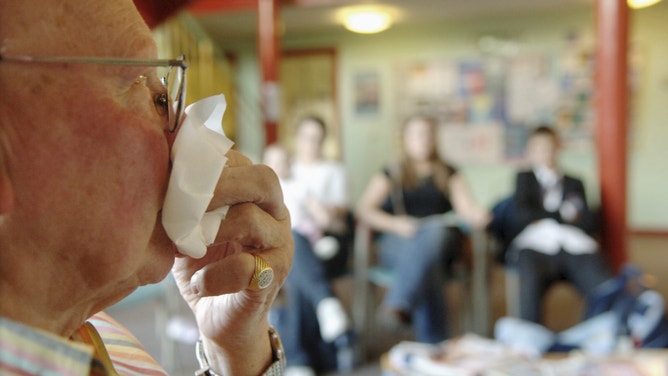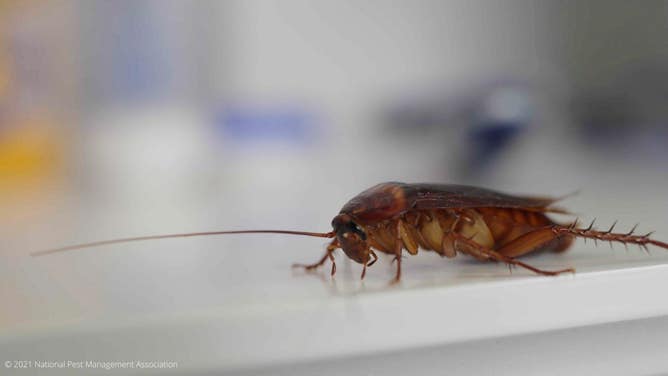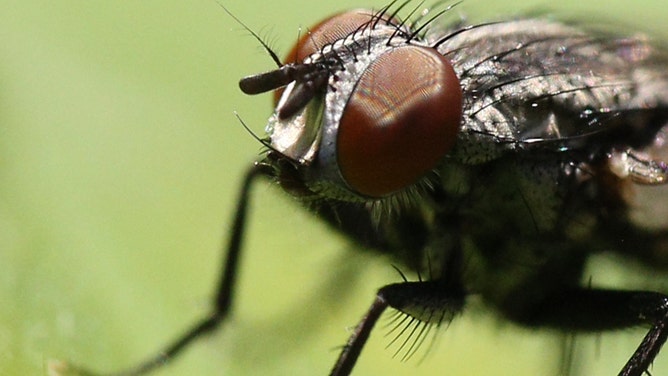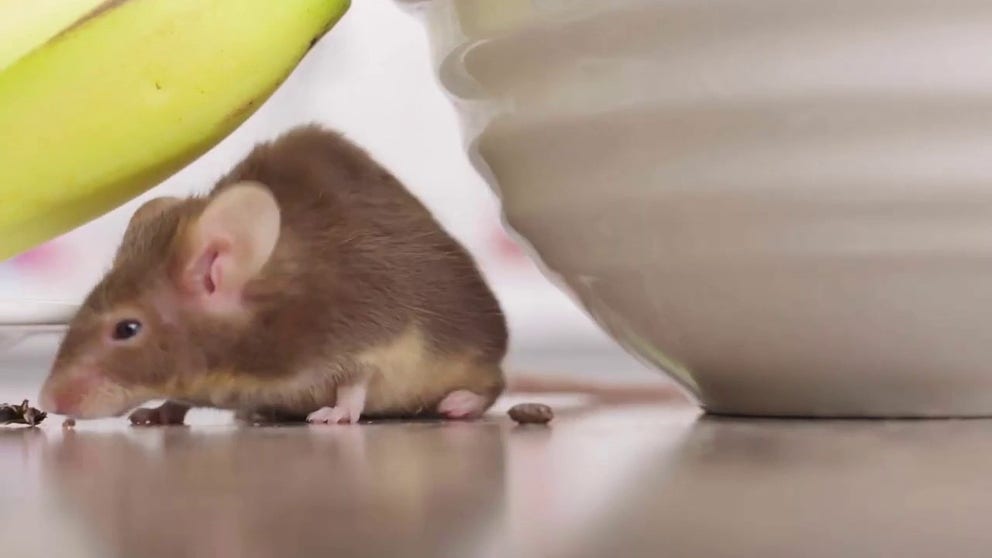These hidden indoor pests could trigger allergies and respiratory issues
Sneaky pests like cockroaches and mice not only make their home in your home, but they are making you and your family sick and you may not realize it.
Coughing at night? It could be cockroaches
An allergy that you may not know you have, cockroaches. The National Pest Management Association estimates that well over half the homes in America have airborne allergens left behind by cockroaches. Since the insect is nocturnal, you may not even realize a colony moved in.
Spring and summer have always been tough for allergy sufferers with all the trees, flowers and grasses in bloom. But just coming inside from the outdoors doesn’t mean the end to sniffling, sneezing, wheezing and coughing. Indoor pests like cockroaches, beetles and rodents are allergens too.
As if you needed another reason to dislike rats and cockroaches, they could be the cause of your indoor allergies and trigger asthma attacks. Kids and the elderly are at the highest risk.
"What oftentimes happens is, folks will be dealing with some respiratory issues, and may also realize they may also be dealing with some cockroach issues and not necessarily link the two," explained Mike Bentley, Director of Education and Training for the National Pest Management Association.

A man sneezes into tissue.
(Universal Images Group / Getty Images)
Cockroach - the allergy you never knew you had
"There are a couple of pests that could make matters even worse and could create prolonged issues inside the house. The first of those is going to be cockroaches," Bentley said. "They're nasty enough to begin with; now we have to contend with airborne allergens that they could be creating and leaving behind that are going to make us sick long after a problem could be resolved."
Protein in feces becomes airborne, and unsuspecting homeowners breathe the irritant in. The cockroach also sheds body parts when it grows that contain similar proteins. Those proteins are then shed off the skin and into the air.
"So, if you have a situation in which you're living in an environment where you have a high cockroach infestation, you're going to be living in an environment that has a high protein count of these airborne allergens and prolonged exposure to these allergens is going to create respiratory issues that could ultimately lead to conditions like asthma," Bentley said.
HOW TO PROTECT YOUR HOME AGAINST TERMITES

Cockroaches are nocturnal, so it is unusual to see one in daylight.
(National Pest Management Agency / FOX Weather)
The German cockroach is a big offender. The small roach lives worldwide, and in the U.S. They are commonly seen in apartment complexes and other multifamily dwellings. They also live in single-family homes, restaurants and offices. He said the infestation usually starts in the kitchen. These creatures can fit through an opening as little as three-eighths of an inch.
About 63% of homes in the U.S. contain cockroach allergens. In urban areas, 78% to 89% of homes house cockroach allergens, according to the NPMA. And those allergens stick around long after the insect is gone.
"This is a cockroach species that is particularly well adapted to living in human environments. In fact, you're not going to find them just out in the wild," he said. "They have adapted to living predominantly with people."
In addition to the respiratory issues, there are all sorts of other diseases and pathogens that could be spread from cockroaches, at least 33 types of bacteria, six types of parasitic worms and at least seven other human pathogens like Salmonella and E. coli, according to the NPMA and the National Institute of Health.
Rodent dangers

A mouse helping itself to the family's grapes.
(National Pest Management Association / FOX Weather)
The cockroach is not the only offender. Bring in the mice and rats.
"Rodents also shed proteins that can lead to respiratory issues, asthma and asthma-like symptoms," Bentley said. "Mice, in particular, are the biggest culprits of this. And house mice have two different proteins that they actually shed. One’s in the urine, and another is in the dander of their hair. And mice defecate a couple hundred times a day."
Mice actually communicate with pheromones in their urine.
"So they're communicating with each other. And so the result is you get these hundreds of drops of urine a day. And that, of course, piles up very quickly and mice can reproduce very quickly," Bentley said. "So within a few months, you can have a major issue of a high number of mice defecating regularly inside your home. So the quantity of these airborne proteins builds up very quickly and start to have some pretty nasty side effects on your breathing."
ALLERGY SUFFERERS, YOU MIGHT BE CLEANING YOUR HOUSE ALL WRONG
A mouse all over the house while you were sleeping
Mice are nocturnal, so homeowners rarely see them crawling around homes. The National Pest Management Association had a mouse track fluorescent paint across a kitchen to show us all the places a mouse went while we were sleeping.
"You have a situation in which you have cockroaches, you have mice... now you're living in an environment that could almost create a certainty that you're going to have some sort of respiratory issue if you fall in that spectrum of risk," he continued.
He said everyone has a sensitivity to protein allergens at different levels.
Other sneaky pests that can make you sick
Dust mites also defecate and shed skin when they grow. The stuff the animal leaves behind also becomes an airborne allergen.
Fabric or carpet beetles can lead to respiratory issues and skin irritation.
"They're surprisingly more common in homes than folks would like to know," Bentley said. "People are probably dealing with these more regularly than they realize now."
The beetles feed on natural fibers in carpets, the sofa and decorations made of dried goods like a wreath. They lay larvae, which look like a worm or caterpillar about a quarter-inch long and covered in long hairs. The hairs break off, the insect sheds its skin, and the hairs become airborne allergens.
HERE ARE THE TOP 20 'ALLERGY CAPITALS' OF AMERICA IN 2023

An adult carpet beetle.
(Artwork by Rebecca Hardy. (Photo by DeAgostini / Getty Images)
"They can create an allergic reaction for folks that can cause itching and redness if it's skin," Bentley said. "If it's breathed in, it can also create some respiratory distress as well."
Keep an eye out for "occasional invaders" like flies, centipedes spiders.
"We call them occasional invaders because they're going to come in. Maybe when there's a high rain, there's a poorly sealed screen door, or there's another entry point they can make their way through," he said.
Those invaders won’t necessarily infest your home but can spread disease.

A housefly.
( Creative Touch Imaging Ltd./NurPhoto / Getty Images)
"Like houseflies (or) some other shiny metallic-looking bottle flies. Those things are very, very, very good at smelling new food and any food source. That usually means our dinner we just cooked or the steaks you just took off the grill or the burgers that are sitting in the plate," Bentley said. "To the flies, though that (dinner) also means the pile of dog feces off of the side, the rotting garbage right around the corner and the dead roadkill 600 yards away along the highway."
Fly legs and bodies pick up nasty stuff like the bacterial pathogens and other diseases that make us sick, then deposit in on the hot off-the-grill burgers we are about to eat.
And as we head through summer, bugs thrive, and populations spike, making the chance of invaders more likely.
"The biggest thing about the summertime is it's not so much that our home becomes more attractive, but just the sheer number of pests are far higher because the summertime is when it's nice and warm out, which means that all the other natural food sources are plentiful," he said. "And the warmth also ramps up their development. So you have all these insects that are breeding faster because there's more food available. That's why their populations typically peak in the summertime."
Protect yourself and your family
The CDC has tips on preventing pest intrusion and sanitizing areas to keep allergens to a minimum. If you are looking for a professional, NPMA compiled a list of licensed pest control companies by zip code.

